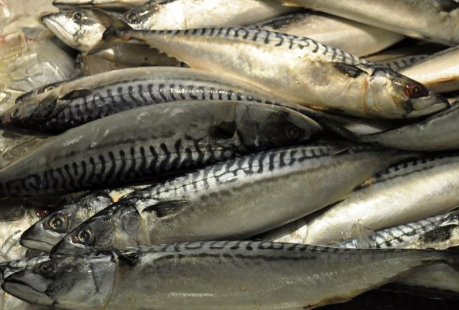 Fats are needed for brain development, enzyme production and are essential for a number of important cellular functions. They are an excellent source of slow-release energy as fats have a low glycaemic index, preventing peaks and troughs in blood sugar levels. However, too high an intake, especially of the wrong type of fats, can lead to over storage, resulting in obesity, fatty liver and hardened arteries, all of which can lead to heart disease, cancer and a host of other deliberating chronic diseases. This page explains which fats we should eat more of, which to avoid, and which other lifestyle measures help maintain healthy cholesterol levels and balance essential bioactive omega fatty acids.
Fats are needed for brain development, enzyme production and are essential for a number of important cellular functions. They are an excellent source of slow-release energy as fats have a low glycaemic index, preventing peaks and troughs in blood sugar levels. However, too high an intake, especially of the wrong type of fats, can lead to over storage, resulting in obesity, fatty liver and hardened arteries, all of which can lead to heart disease, cancer and a host of other deliberating chronic diseases. This page explains which fats we should eat more of, which to avoid, and which other lifestyle measures help maintain healthy cholesterol levels and balance essential bioactive omega fatty acids.
Types of edible fats:
Edible fats include cholesterol, the main component of animal cell walls, trans-fats, which are mostly harmful and man-made, and edible fats, made from glycerols and fatty acids. Plant sterols are similar to cholesterol but generally have lower serum cholesterol levels. If fats contain three fatty acids, they are known as triglycerides, and these are the main fats found in the human body. They are defined as saturated or not depending on the number of carbon to carbon (c=c) double bonds they contain and can occur in both plants and animal fats.
Categorisation of fats in our food chain
Saturated triglycerides (no C=C double bonds)
- Mainly plant-based
– Lauric acid
– Myristic acid - Mainly animal-based
– Palmitic acid
– Stearic acid
– Butyric acid
Unsaturated triglycerides (contains C=C double bonds)
- Monounsaturated; 1 double bond linked with omega 7 & 9 fatty acids
– Omega 7
– Palmitoleic acid
– Vaccenic acids
– Omega 9
– Oleic acid
– Erucic acid
- Polyunsaturated; >1 double bond linked with omega 3 & 6 fatty acids
– Short chain omega 3
– Alpha-linolenic acid (ALA)
– Eicosatetraenoic acid (ETA)
– Long chain omega 3
– Eicosapentaenoic acid (EPA)
– Docosahexaenoic acid (DHA)
– Short chain omega 6
– Linoleic acid
– Long chain omega 6
– Gamma-linolenic acid (GLA)
– Di homo gamma linoleic acid (DGLA)
– Arachidonic acid (AA).
- Trans-fats
- Cholesterol
– Low-Density Lipoproteins (LDL)
– High-Density Lipoproteins (HDL)
- Plant phytosterols
– Sterols (unsaturated with c=c bonds) – sitosterol and campesterol
– Stanols (saturated with no c=c bonds) – sitostanol and campestanol
Triglycerides and fatty acids
Triglycerides contain three fatty acids to one glycerol and are either saturated or unsaturated. They are not absorbed into the body as a whole chemical but are instead processed in the gut where the enzyme lipase (from the pancreas) and bile (from the liver) splits the fatty acids from the glycerol section (lipolysis). The two elements are then absorbed separately. The triglycerides are then rebuilt in the gut wall and packaged together with cholesterol and lipoproteins to form either chylomicrons or low-density lipoproteins (VLDL) for transport around the body. Tissues can capture the chylomicrons, releasing the triglycerides to be used as a source of energy.
Liver cells can also make and store triglycerides when we don’t need them for energy. When the body eventually requires fatty acids as an energy source, the hormone glucagon triggers the breakdown of the triglycerides to release free fatty acids. These fats are the first to be used up when we expend energy. Fatty acids contain more than twice as much energy (9 kcal/g) as carbohydrates (4 kcal/g). As the brain cannot utilize fatty acids as an energy source (unless converted to ketones), the glycerol component of triglycerides can be converted into glucose via a process called gluconeogenesis.
Saturated triglycerides fats
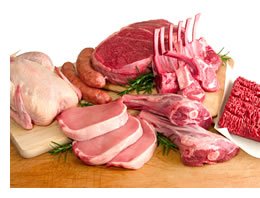
Unsaturated triglycerides fats
These are usually categorised as either monounsaturated, containing one double carbon bond, or polyunsaturated triglycerides, containing more than one carbon bond and often referred to as PUFA’s. Monosaturated triglycerides have their glycerol component linked with omega 7 or 9 fatty acids, while polyunsaturated triglycerides have their component linked with 3 or 6 fatty acids. The common types of fatty acids are outlined below.
Omega 3 fatty acids
These fats are essential for the healthy functioning of the body. They cannot be synthesised by us, so they have to be ingested regularly (like vitamins), hence the name essential fatty acids. Convention separates them into short-chain and the more biological active long-chain varieties:
Short-chain omega 3 – Alpha-linolenic acid (ALA) and eicosatetraenoic acid (ETA) are found in plant oils such as walnuts, edible seeds, clary sage, algal oil, flaxseeds and flaxseed oils, sacha inchi, echium and hemp oils
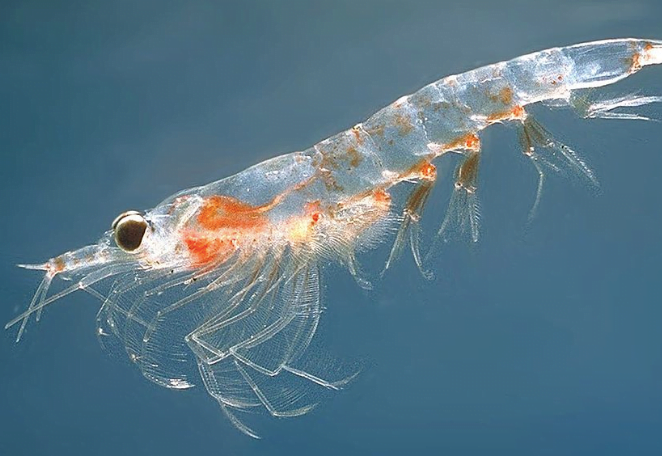
Omega 6 fatty acids
Most dietary omega-6 fatty acids originate from vegetable oils, nuts, grape seed oil, soya, flaxseed and oily vegetables such as avocado. Linoleic acid, the shortest-chained omega-6 fatty acid, is essential fatty because the human body cannot synthesize it. The other omega 6’s can be found in smaller amounts in various foods and include gamma-linolenic acid (GLA), Di Homo gamma linoleic acid (DGLA) and Arachidonic acid (AA). These are generally synthesised by the body.
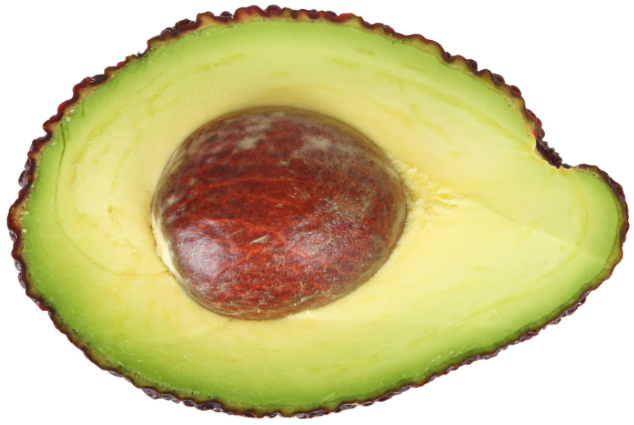
The enzymes used to convert short-chain omega 6 (linoleic acid) into long-chain omega 6’s (GLA, DGLA and AA) are actually the same as those required to convert short-chain omega 3 (ALA) to long-chain omega 3 (EPA). Too high an intake of short-chain omega 6 and too little long-chain omega 3 could, therefore, potentially lead to a deficiency in the enzymes required to form long-chain omega 3’s, something which should be of concern given that which are regarded as more biologically active and healthier for the body. Consequently, it’s important to consider diets with a good ratio of long-chain omega 3 to omega 6 vegetable oils.
It is widely reported that omega 6’s are pro-inflammatory and may potentially promote illnesses related to chronic inflammation. There are some reports among people with hyper-immune syndromes like asthma and rheumatoid arthritis that diet high in omega 6 can exacerbate symptoms. However, clinical evidence for omega 6 being pro-inflammatory is, at best, circumstantial. In fact, a healthy inflammatory pathway will be more efficient in detecting how and when to appropriately respond to trauma and infection. Omega 6 is essential for a healthy immune system, as AA is metabolized to become both pro-inflammatory and anti-inflammatory eicosanoids during and after the inflammatory response. Moreover, GLA and DGLA actually reduce inflammation, especially if there are no deficiencies in essential nutrients required for good enzymatic function (magnesium, zinc, and vitamins C, B3, and B6). Increased consumption of omega 6 in laboratory studies has not been shown to cause inflammation during normal metabolic conditions unless lipid peroxidation products are mixed in.
In support of this, most, well-conducted trials show that omega 6’s are not carcinogenic. The two largest studies evaluating serum omega 6 (an analysis of the Health professionals follow up study and the SELECT study) both showed that higher serum omega 6 actually led to a lower rate of prostate cancer.
Furthermore, arachidonic acid (AA), one of the most abundant fatty acids in the brain and present in similar quantities to omega 3 (DHA), has been shown to activate syntaxin, a protein involved in the growth and repair of neurons. Limited trials have found improved cognitive functioning in children with adequate intake.
In terms of sport and exercise performance, AA is metabolised into eicosanoids during and after physical activity and promotes growth and muscle repair via conversion to prostaglandin (PGF2alpha). Researchers from the University of Tampa reported that AA increased lean body mass, strength, anaerobic power and exercise performance in a study involving experienced resistance-trained men.
It’s clear that we should not be avoiding foods rich in omega 6 as they are healthy and beneficial. The American Heart Association recommend individuals follow a diet which maintains sufficient intake of both omega-3 and omega-6 fatty acids for optimal health. In practical terms, this means at least 10% of calories coming from omega-6 fats. Unfortunately, typical western diets are increasingly deficient in omega 3, especially the long-chain forms. The best way to improve intake is to eat oily fish 2-3 times a week as part of a regular balanced diet.
Omega 7 fatty acids (monounsaturated)
The main omega 7’s found naturally are palmitoleic acid and vaccenic acid. These are found in macadamia nuts and sea buckthorn, and to a lesser extent, in avocado fruit. They have been shown to increase insulin sensitivity and suppress inflammation.
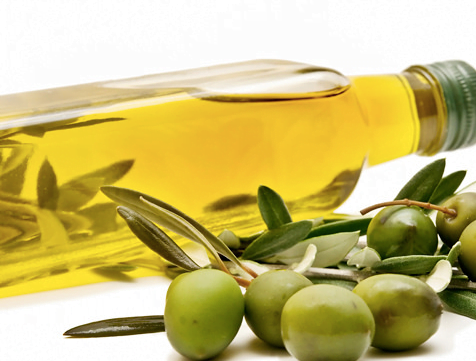
These are found in both animal and vegetable oils. The two most common omega−9 fatty acids are:
- Oleic acid found in olive, avocado and macadamia nut oils
- Erucic acid found in rapeseed, wallflower and mustard seeds
In addition to being a useful source of slow-release energy, increased intake of monounsaturated fats helps lower blood levels of Low-Density Lipoprotein (LDL – bad cholesterol), while proportionately raising blood levels of High-Density Lipoprotein (HDLP-good cholesterol), explaining why they are associated with a lower risk of heart attacks. These oils are also rich in healthy polyphenols which help produce anti-oxidant enzymes and have other anticancer benefits. Of particular note are the lignans and secoiridoids found in olive oil, which have shown to have a direct inhibitory effect on the tyrosine kinase activity of the HER2 gene, something which may be helpful for women with over-expressing HER breast cancers.
Transfats

Cholesterol
Cholesterol is a sterol (modified steroid) that is an essential structural component of animal cell membranes. Cholesterol also serves as a building block for the biosynthesis of steroid hormones such as testosterone, bile acids and vitamin D.
Although normal levels are important, increased levels in the body are linked to increased risk of heart disease, stroke, dementia, other neurodegenerative disorders, as well as cancer development and its progression after diagnosis.

Transport of cholesterol: Cholesterol is transported around the body in lipoproteins. The total level measured in the bloodstream should ideally be less than 5mmol/L for healthy adults, and less than 4mmol/L for people with high cardiac risk and suffering from conditions such as angina, heart disease, peripheral vascular disease and diabetes. A lipoprotein with a low protein-cholesterol ratio is called low-density lipoprotein (LDL), while one with a high protein-cholesterol ratio is a high-density lipoprotein (HDL).
- High-density lipoprotein (HDL) – carries cholesterol away from the cells and back to the liver, where it’s either broken down or passed out of the body as bile. For this reason, HDL is referred to as “good cholesterol”, and higher levels are better (1mmol/L or more).
- Low-density lipoprotein (LDL) – carries cholesterol to the cells that need it, but if there’s too much cholesterol for the cells to use it can build up in the artery walls, leading to disease. For this reason, LDL is known as “bad cholesterol”, and it is better to have lower levels (3mmol/L or less).
Factors that affect cholesterol levels
Eating far too much cholesterol and high energy saturated fats is usually the explanation for elevated cholesterol levels, as the body simply cannot excrete it fast enough and, therefore, has to find areas to store it via LDL, such as in the liver, soft tissues or walls of arteries. Imbalances in the production of cholesterol and re-absorption / excretion can also significantly influence serum cholesterol levels. The environmental, dietary and biological factors which elevate cholesterol levels include:
- Excess energy intake
- High cholesterol intake
- Low polyunsaturated fatty acid intake
- Low physical activity
- High processed sugar intake
- Chronic inflammation
- Poor gut microflora
- Low intake of polyphenol-rich foods
- Low dietary intake of plant sterols
Tips to improve the fat profile in our bodies
All fats are energy-rich, meaning too high an intake compared to energy use via exercise can lead to over storage, resulting in an increased risk of a multitude of deliberating chronic diseases. Cholesterol and saturated fats have the highest energy potential. Transfats have high energy, but no other nutritional value, while the omega triglycerides have numerous healthy attributes. As a general rule, we need to reduce animal saturated fats, cholesterol and eliminate transfats, while increased polyunsaturated (Omega 3&6) and monounsaturated (omega 7&9) fat intake. Dietary and lifestyle tips to help achieve this are outlined below.
Increase the proportion of fats from plant sources
Linseeds (flax seeds) and the healthy oil it produces have a very high percentage of unsaturated to saturated fats. It also contains a high percentage of omega-3 content, six-times richer than most fish oils, albeit in the short-chain form (alpha-linoleic acid).
Avocado has the highest oil content of all fruits, and most of its fats are unsaturated, monounsaturated and omega-9. Other natural sources of healthy fats include rapeseed oil, which is particularly cheap as it can be grown in northern European countries.
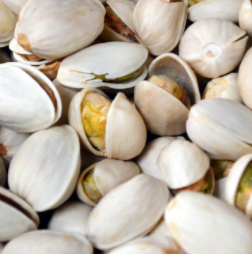
Kiwi fruit has an even better ratio of omega 3-6, but there are only small quantities of oil in kiwi’s as opposed to linseeds.
Seeds such as pumpkin seeds have a high percentage of unsaturated fats (90%) and a good ratio of omega 3:6 (3:1).
Microalgae are rich sources of the longer-chain omega-3 fatty acids (EPA and DHA) and can be produced commercially in bioreactors. This is the only source of DHA acceptable to vegans. Brown algae (kelp) is also an excellent source of EPA.
Other plant-based foods with a good ratio of omega 3-6 include acai, seaweed, butternuts, chai sage, shiso and lingonberry. The leafy green vegetable Portulaca oleracea (Purslane) has the highest omega 3 levels of green vegetables but is very rarely used in western cooking. Some vegetables contain a small amount of omega 3, notably strawberries and broccoli.
Extracted plant oils used for cooking or salads contain a mixture of saturated and unsaturated fats. Linseed (flax seeds), olive and rapeseed (canola) oils have a particularly good percentage of unsaturated fats. Sunflower, soya bean and corn oil all contain mostly polyunsaturated fats, but tend to be heavily processed during manufacturing. Palm and coconuts have the highest percentage of saturated fats, making them energy-rich and potentially unhealthy, although cold-pressed varieties can still be healthy. In terms of the omega 3-6 ratio, the best oils are linseed, rapeseed, soybean and olive (which also has omega-9). Oils from microalgae and kelp contain the highest DHA and EPA levels and are usually taken as a supplement rather than used for cooking. Sunflower, palm kernel, cottonseed, grapeseed and corn oil contain virtually no omega-3.
Animal sources of fatty acids
Fish: The most widely available source of unsaturated fats and essential long-chain n-3 fatty acids EPA (eicosapentaenoic acid) and DHA (docosahexaenoic acid) is cold-water, oily fish. Interestingly, fish do not synthesize them; they obtain them from the algae and plankton they eat. Fish with the highest levels include mackerel, salmon, herring, anchovies, pollock, shark, swordfish, sardines and, to a lesser extent, tuna. These fish have around seven times as much n−3 as n−6. Consumers of oily fish should be aware of the potential presence of heavy metals such as mercury and cadmium (from discarded batteries), as well as chemicals such as dioxin. As these accumulate in the food chain, larger fish such as shark and swordfish have the highest levels. It is suggested that their intake should be limited to twice a week (which is still more than the majority of people currently consume in a western diet). However, after an extensive review of the evidence, Harvard’s School of Public Health reported in the Journal of the American Medical Association that the benefits of fish intake generally far outweigh the potential risks. Contamination is even lower in white, sea fish such as bass and bream, and no limits have been set on their consumption, although these have lower omega 3 levels. Freshwater fish such as trout and lake varieties are almost completely free of potential heavy metal contamination and have good levels of omega 3. Some protection from mercury contamination can be gained from eating foods rich in selenium (brazil nuts, crab meat), as this metal can bind to the mercury and stop it being absorbed into the body.

supplements
Fish oil supplements: Fish oils are particularly rich in long-chain omega 3 fatty acids (EPA & DHA) and are also a good source of the fat-soluble vitamins A, D, E and K. Cod liver oil is also rich in omega 3, but there are some concerns that the vitamin A content is too high. Excess vitamin A intake over long periods can lead to health problems. It is, therefore, better to take whole fish oils rather than cod liver oils. Good quality fish oils also contain phospholipids that improve omega 3 absorption, while they also contain an antioxidant called astaxanthin which helps keep the oil protected from oxidation. Bad quality fish oils can be contaminated by heavy metals such as cadmium, mercury and arsenic, as they often use larger fish such as swordfish, king mackerel and large tuna. Fortunately, most fish oils have not been found to contain these heavy metals, especially those that are made from smaller fish such as salmon, herring, mackerel, anchovies and sardines. It’s important to store fish oils in a cool dark place and consume well within the use-by date.
Meat: Most meat is high in cholesterol and saturated fats. Being vegetarian will reduce the intake of these fats, but measures have to be taken to increase omega 3 and vitamin B12 intake from other sources. If you eat meat, it should be regarded as a luxury rather than a standard part of every meal. Consider reducing meat consumption to 2-3 times a week and choosing quality over quantity. Processed meat usually has more fat and unhealthy additives such as sugar, salt and preservatives. Go for grass-fed animals, particularly game, which typically have more n−3 than grain-fed animals. Studies suggest that the evolutionary human diet, rich in game animals and seafood, provided a much higher ratio of omega 3 to other fats. In most countries, commercially available lamb is typically grass-fed, and thus higher in n−3 than other grain-fed or grain-finished meat. Free-range chickens which are allowed to roam, eating grass, worms and insects as well as grain, generally have much higher omega-3.
Eggs: These can be a good source of omega 3 (mostly ALA) and protein, but only if produced by chickens fed a diet of greens and insects rather than corn or soybeans. In addition to feeding chickens insects and greens, fish oils may be added to their diet in order to increase fatty acid concentrations in eggs. The addition of flax, chia and canola seeds to the diet of chickens, both good sources of alpha-linolenic acid, increases the omega-3 content of eggs, yet is very rarely done for mass-produced chicken eggs.
Milk and cheese: These are energy-rich, so not good if you are struggling to lose weight. The lactose in milk is rapidly broken down to glucose and galactose, leading to an increase in glucose levels (high glycaemic index). Some people also develop intolerance to lactose, especially as they get older, which causes inflammation and gut problems. Nevertheless, milk from grass-fed cows can also be a good source of omega-3. One UK study demonstrated that half a pint of milk from grass-fed cows provides 10% of the recommended daily intake of ALA, while a piece of organic cheese the size of a matchbox may provide up to 88%.
Physical activity: Cholesterol is an excellent energy source, especially for individuals participating in regular exercise. Exercise has been shown not only to help weight control but also to lower serum triglycerides, total cholesterol and improve the ratio of high-density lipoprotein to low-density lipoproteins. Furthermore, there is evidence that, even before weight reduction occurs, exercise directly lowers excess serum testosterone, oestrogen and leptin levels, while raising adiponectin levels, all of which have a favourable effect on cholesterol pathways.
Processed sugar: Sugar is now widely recognised as one of the main reasons for high cholesterol. A number of well-conducted cohort studies have linked higher processed sugar intake with higher serum cholesterol and heart disease. Notwithstanding the influence of sugars on obesity, the two explanations behind why sugar increases cholesterol are, firstly, that the peaks and troughs of insulin levels it creates signal the body’s metabolism into believing it needs to store more energy, thus decreasing excretion of cholesterol and increasing reabsorption. The second explanation is that sugar leads to increased expression of inflammatory markers, including 12-lipoxygenase (12-LOX) and its arachidonate metabolites (see below). The most convincing study, published in the Journal of the American Medical Association, analysed the dietary habits of a cohort of 6110 Americans and showed that, after several years, those who ate more than 10% of their daily calories as sugar had significantly raised triglyceride levels, lower HDL and higher LDL cholesterol levels.
Abnormal gut bacteria: As mentioned above, cholesterol in the gut, originating from bile and desquamated intestinal cells, can be metabolized into a non-absorbable sterol that is excreted in the feces by a cholesterol-reducing bacterium. Typically, about 50% of excreted cholesterol is reabsorbed by the small intestine back into the bloodstream. Research has revealed that abnormal gut bacteria reduce the natural excretion of cholesterol and increase serum levels, while it has also been suggested that a formulation of Lactobacillus in a nutritional supplement may be able to reduce blood levels of LDL (bad cholesterol).
Chronic inflammation: Although an inflammatory response is an important part of healthy immunity, persistent low-grade increased chronic inflammatory activity is associated with uncomfortable symptoms including fatigue, joint pains, abdominal bloating, cognitive impairment and anxiety. As well as raised inflammatory markers in the bloodstream, chronic inflammation raises blood sugar and cholesterol levels and is associated with a greater incidence of age-related diseases such as Alzheimer’s disease, cancer, arthritis, type two diabetes, atherosclerosis, heart disease and stroke. Chronic inflammation increases cholesterol (and sugar) levels because it makes the body think it is under attack. This triggers stress, flight and fight pathways which preserve as much energy as possible, making more cholesterol and blocking excretion in the gut. The factors that increase chronic inflammation in the body (pro-inflammatory) include sedentary behaviour, obesity, sugar intake, and exposure to environmental toxins. Factors that reduce inflammation (anti-inflammatory) in the body include regular exercise, a polyphenol-rich diet and healthy bacteria intake via a macrobiotic diet or probiotic supplements.
Dietary phytosterols: Phytosterols are structurally related to cholesterol. Plants manufacture phytosterols, and these compete with cholesterol for reabsorption in the intestinal tract, thus potentially reducing cholesterol reabsorption. When intestinal lining cells absorb phytosterols, in place of cholesterol, they usually excrete the phytosterol molecules back into the gut, an important protective mechanism. Sitosterol and campesterol are the most frequent plant sterols and respectively constitute about 60% and 35% of plant sterols in food. Plant stanols, are the saturated form of plant sterols, meaning they have no double bond in the sterol ring. Saturated sitosterol is known as sitostanol, and saturated campesterol is campestanol.
Plant foods that are particularly rich in phytosterols (stanol or sterol esters) include avocados, flaxseed, peanuts, soybeans, chickpeas, quinoa, pumpkin seeds, beans and buckwheat, while they are also found in whole grains, vegetables, fruits, nuts and seeds. Regular intake of these foods is linked to lower serum cholesterol levels, as highlighted in a recent meta-analysis of 41 trials. It appears that 2-3 g/day is the optimal amount to reduce low-density lipoprotein (LDL) by about 10%, while higher intake of sterol esters does not seem to reduce cholesterol any further. The beneficial effects have been found to be amplified when combined with other lifestyle interventions. For example, eating foods low in saturated fat and cholesterol and high in phytosterols reduced LDL by up to 20%, while eating them with statin medication almost doubled their cholesterol-lowering capacity.
Plant sterol / stanol supplements: A dietary supplement is regarded by many as a convenient way to boost daily plant sterol intake. Studies have suggested that these can lower cholesterol by 20%, especially if combined with other lifestyle measures, reducing future cardiovascular risk and mitigating the need for statins. Sterol supplements would also be very useful for individuals who are already taking statins but are suffering side-effects, as studies show they enhance the LDL-lowering effects of the drugs. Instead of stopping statins altogether, people with side effects may be better off lowering their dosage and taking a concomitant plant sterol supplement at the same time. There are some safety issues related to a very high intake of plant esters sterols (>3g / day), with an increase of serum plant sterol levels linked to an increased risk of atherosclerosis. This risk is largely hypothetical, and the reality is that, in a western diet, consumption of plant sterols is usually much less than 0.5g / day, meaning individuals can safely be advised to eat considerably more of these foods and even take a sterol supplement. Another potential concern with very high doses is that they could potentially affect the absorption of carotenoids and fat-soluble vitamins. This, in theory, constitutes a hazard to children, as well as pregnant and breastfeeding women. Because of this, labelling advises these individuals against consuming these products, despite meta-anlyses not demonstrating lower vitamin A, D, E and K levels after plant sterol intake. Nevertheless, general advice when taking a sterol or stanol supplement is to ensure adequate intake of carotene-rich foods such as carrots, pumpkins, squash, broccoli, apricot and mango. It should also be noted that nutritional supplements and functional foods can be enriched with saturated, less absorbable plant stanol esters which not only reduce serum cholesterol on their own but also reduce plant sterol levels in the bloodstream. The safety and efficacy of plant stanol esters have been confirmed in more than 70 published clinical studies, which show that daily intake of 2g lowers LDL-cholesterol by 10%, on average.
Other general issues with the cooking, storage and eating of fats
Heating oils: It is necessary to process oils in order to bottle and store them. Heating oils, however, tends to damage the unsaturated fatty acids, particularly omega-3, while increasing the percentage of saturated varieties and the levels of hydrocarbons and acrylamides. Olive oil, for example, contains high quantities of omega-9 (Oleic acid) but only low to moderate amounts of omega 3 and 6, and heating it in a frying pan quickly damages the healthy fats. It is better to use plant saturated oil such as sustainably sourced palm oil when deep-frying, as it is more resistant to oxidization and has a higher smoke point than polyunsaturated oils. Other good examples are avocado oil, peanut oil, rice bran oil. Olive oil, even cold-pressed can be used for frying, but when cooking it is best not to heat rapidly at too high a temperature – use a low flame and if you see smoke turn off the heat completely. The more often oils are reheated, the higher the damage and carcinogen content.
Storing fats: As well as time, several factors affect the safe storage and quality of edible oils including air, heat and light. Many types deteriorate through oxidation (rancidity), a process which is greatly enhanced when edible oils are stored in containers that are not airtight and in areas where the oil is exposed to heat and light. If improperly stored, some oils can easily take on other flavours. In this case, an unpleasant smell or taste indicates that the oil is no longer suitable for consumption. A wine smell or taste may reveal that the oil was not stored properly, while a metallic flavour indicates that the oil was stored in a container made with reactive metal. Most unrefined oils (oils obtained from cold pressing, mechanical methods) will keep for 3 to 6 months if properly stored in a cool dark location. The refrigerator is the best place to store unrefined oils and although most will solidify in the colder temperature, they will return to a liquid state if removed from the refrigerator one or two hours prior to use. Refined oils (oils obtained from heat and solvent extraction) tend to keep twice as long as unrefined oils – at least 6 to 12 months if stored properly. An oil high in polyunsaturated fat has a much shorter shelf life than oils high in monounsaturated or saturated fat and should be stored in the refrigerator to extend the shelf life.
Cooking with fats: The following tips depend on whether an individual needs the energy from fats or not. Sportsmen and women, or those with physically active jobs, will derive a great deal of benefit from fats in foods as a useful slow-release energy source. Likewise, patients with advanced cancer or poor appetite will need to maintain their fat intake. Most of us, however, need to reduce our energy intake and cholesterol levels and should consider dietary changes and a healthier approach to cooking.
As much as possible, aim to gently grill, bake, poach or steam food rather than deep frying or roasting. Measure oil with a tablespoon or use an oil spray, rather than pouring it straight from a container. Spoon off fats and oils from roasts and, likewise, when cooking with mince (Spaghetti Bolognese, chilli con carne etc.) use a lower-fat mince, brown the mince first and then drain off the fat before mixing other ingredients. When making casseroles, stews, pies or curries, include more vegetables or beans and use less meat. A good trick is to use a soya meat substitute instead, or even mix half and half – most people will not even notice. Try to cut out meat or restrict consumption to 2-3 times a week and choose lean cuts from animals that have been grass-fed or game such as venison and pheasant. Processed meat products such as bacon, sausages and pies invariably use cheap fatty meat with added salt and sugar. Likewise, choose eggs, cheese and milk from free-range animals and prepare without oil or butter by serving them poached, boiled or dry-fried. Avoid yoghurt with added sugar and use live varieties. When roasting potatoes, cut them into larger pieces than usual and use just a little sunflower or olive oil. When making sandwiches, try leaving out the butter or, if necessary, use reduced-fat spreads such as olive oil or sunflower spreads (avoiding trans fats). If adding cheese, try a strong-tasting cheese such as mature cheddar or stilton because you’ll need less. If you’re making your own chips, use the thick varieties and cook them in the oven with a little sunflower oil, rather than deep-frying.
Choosing foods when out and about: Choose a lower-fat topping for pizza, such as vegetables, ham, fish or prawns, instead of pepperoni, salami or extra cheese. Choose thick, straight-cut chips instead of french fries or crinkle-cut. Try to avoid meat as it will often be cheaper cuts from mass-produced farms, and particularly avoid processed meats. If possible, choose wholemeal pasta and a tomato sauce rather than a creamy or cheesy sauce. In the kebab shop, go for a shish kebab with pitta bread and salad, rather than a cheaper more fatty doner. Curries can be very healthy and tasty but go for dry or tomato-based dishes, such as tandoori or madras, instead of creamy curries such as korma, pasanda or masala. Choose rice and chapatti instead of naan. Likewise, in a Chinese restaurant or takeaway, choose lower-fat dishes such as steamed fish, chicken chop suey or Szechuan prawns. Thai food usually has even less fat, but still go for a stir-fried or steamed dish containing chicken, fish or vegetables rather than beef or pork. Watch out for Thai curries containing coconut milk as this is high in fat. In the coffee shop, opt for coffees which use less milk such as a flat white or cortado, and don’t be tempted by the usual extensive range of fatty and sugary cakes. Overall, it is much better not to snack between meals and to instead give your stomach, gut and pancreas a rest from digestion. Ideally, your stomach should be empty when you start your next meal. Sugary snacks should definitely be avoided between meals, as these will rapidly increase and decrease insulin levels within half an hour, making you feel tired and hungry. If you do need a snack, try nuts, pumpkin seeds or wholemeal bread. If you need something more, try a small piece of 100% sugar-free chocolate with a piece of fruit – tasty, super healthy and packed with polyphenols.
Summary – Practical tips to reduce serum cholesterol and increase polyunsaturated fats
Ensure a healthy energy balance
- Don’t overeat
- Try to fast thirteen hours overnight
- Try not to snack between meals
- Reduce animal saturated fats and cholesterol intake
- Be more physically active
- On days during which you are sedentary eat less and on active days eat more
Reduce processed sugar or refined carbohydrate intake
- Stop adding sugar to tea or coffee
- Change to sugar-free cereals in the morning
- Although whole fruit is good, dried fruit or fruit preserves in sugar should be avoided
- Cut out sugary sweets, cake and biscuits, particularly on an empty stomach
Increase the proportion of unsaturated (polyunsaturated and monounsaturated) fatty acids
Oily sea fish – mackerel, herring, swordfish, salmon, sardine
- Other white sea fish – cod, sea bass and bream
- Algae, krill and brown algae (kelp)
- Fresh water fish – lake varieties, trout and river salmon
- Seeds – linseeds (crushed), sunflower, sesame and pumpkin seeds
- Walnuts, almonds, Brazil nuts, peanuts, pine, cashews, hazel and macadamia nuts
- Meat from wild game or animals fed on grass
- Dairy and eggs from free-range animals fed on grass or natural foraging
- Fruit – particularly avocado, kiwi fruit, strawberries and lingonberries
- Vegetables – leafy greens, hemp and broccoli.
- Herbs – chai sage and perilla
- Cold-pressed vegetable oils e.g. olive oils, soya, rapeseed (Canola) and sunflower
- Root vegetables, carrots, squashes
Decrease animal saturated fats and cholesterol intake
- Meat – particularly non-grass fed
- Animal fats
- Trans fats in fast foods, margarines, biscuits and cakes.
Increase plant phytosterols and stanols
- Avocados, flax seed, peanuts, soya beans, chickpeas, beans and buckwheat
- Grains, vegetables, fruits, nuts and pumpkin seeds.
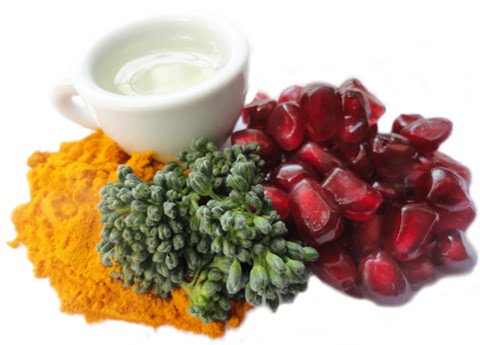
- Colourful fruit – pomegranates, tomatoes, strawberries
- Cruciferous vegetables – broccoli, Brussels sprouts, asparagus
- Herbs and spices – turmeric, chilli, parsley
- Teas, mushrooms, sugar-free chocolate
Eat more bacteria rich foods
- Sauerkraut
- Kefir
- Miso soup
- Kimchi
References:
Rosin S et al. Optimal Use of Plant Stanol Ester in the Management of Hypercholesterolemia. Cholesterol 2015 doi: 10.1155/2015/706970
Hallikainen MA, et al Comparison of the effects of plant sterol and stanol esters in lowering serum cholesterol concentrations in subjects on a low-fat diet. Eur J Clin Nutr. 2000 54(9):715-25.
Katan MB, Grundy SM, Jones P, Law M, Miettinen T, Paoletti R. Efficacy and safety of plant stanols and sterols in the management of blood cholesterol levels. Mayo Clin Proc. 2003;78:965–978.]
Welsh J, Sharma A, Abramson J et al Caloric sweetener consumption and dyslipidemia among US adults.2010 JAMA 21; 303(15),1490-7.
Kitahara C et al. Total Cholesterol and Cancer Risk in a Large Prospective Study. 2011 J Clin Oncol 29:1592-98.
Te Morenga L, et al Dietary sugars and body weight: systematic review and meta-analyses of randomised controlled trials and cohort studies BMJ 2013;346:e7492
Weil D et al Dietary Glycemic load and index and risk of coronary heart disease. Archives of internal medicine Int J Oncol 2009, 34(1):43.
Platz EA, et al. Association between plasma cholesterol and prostate cancer in the PSA era. Int J Cancer 2008;123(7):1693-1698.
Rock CL et al. Results of the Exercise and Nutrition to Enhance Recovery and Good Health for Overweight or Obese Breast Cancer Survivors J Clin Oncol 2015;33(28):3169-3176.
Friedenreich CM, et al. Alberta physical activity and postmenopausal breast cancer prevention trial: sex hormone changes. J Clin Oncol 2010;28(9):1458-1466
Foster-Schubert K, et al. Effect of diet and exercise, alone or combined, on weight and body composition in overweight-to-obese post-menopausal women. Obesity 2012;20(8):1628–1638
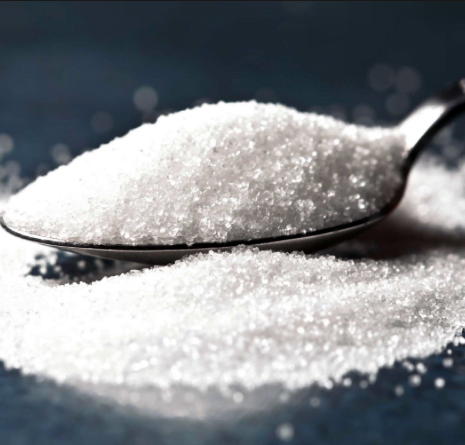
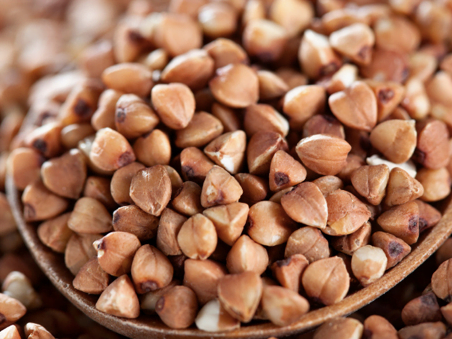
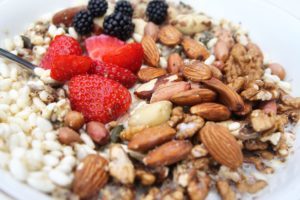 Oily sea fish – mackerel, herring, swordfish, salmon, sardine
Oily sea fish – mackerel, herring, swordfish, salmon, sardine